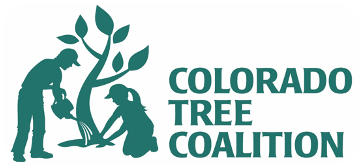Why Plant a Tree?
 Trees are major capital assets in cities across the United States. Just as streets, sidewalks, public buildings and recreational facilities are a part of a community's infrastructure, so are publicly owned trees. Trees -- and, collectively, the urban forest -- are important assets that require care and maintenance the same as other public property. Trees are on the job 24 hours every day working for all of us to improve our environment and quality of life.Colorado’s urban forest provides many environmental benefits to our community. Aside from the obvious aesthetic benefits, trees within our urban forest improve our air, protect our water, save energy, and improve economic sustainability.Unlike urban areas in the eastern U.S., canopy cover in Colorado decreases along an urban to rural gradient. In other words, since most trees have been planted much of the tree cover is in urban areas as opposed to “natural lands." Therefore, estimated pollutant uptake rates are higher for residential compared to natural or unmanaged lands. Possible management implications of these estimates are that air pollutant uptake benefits from tree planting may be optimized by planting in areas where air pollutant concentrations are elevated and where relatively high planting densities can be achieved thereby enhancing the health of urban dwellers.
Trees are major capital assets in cities across the United States. Just as streets, sidewalks, public buildings and recreational facilities are a part of a community's infrastructure, so are publicly owned trees. Trees -- and, collectively, the urban forest -- are important assets that require care and maintenance the same as other public property. Trees are on the job 24 hours every day working for all of us to improve our environment and quality of life.Colorado’s urban forest provides many environmental benefits to our community. Aside from the obvious aesthetic benefits, trees within our urban forest improve our air, protect our water, save energy, and improve economic sustainability.Unlike urban areas in the eastern U.S., canopy cover in Colorado decreases along an urban to rural gradient. In other words, since most trees have been planted much of the tree cover is in urban areas as opposed to “natural lands." Therefore, estimated pollutant uptake rates are higher for residential compared to natural or unmanaged lands. Possible management implications of these estimates are that air pollutant uptake benefits from tree planting may be optimized by planting in areas where air pollutant concentrations are elevated and where relatively high planting densities can be achieved thereby enhancing the health of urban dwellers.
SOCIAL BENEFITS
Looking at trees helps us feel a sense of serenity. They seem to make life more pleasant. Trees have been shown to have an actual physical effect as well, enabling hospital patients to recover more quickly when their room offered a view of trees. Because of their potential for long life, trees are frequently planted as memorials, and friends and family members often become personally attached to the trees. It's not unusual for a community to come together to save a large or historic tree, and residents are often resistant to removing trees when their cities plan to widen streets.
ENVIRONMENTAL BENEFITS
Trees improve air quality, conserve water, and harbor wildlife. They moderate the effects of sun, wind, and rain. During summer months, the shade trees provide keeps us cool and provides protection from direct sunlight. The downward fall of rain, sleet, and hail is initially absorbed or deflected by trees, which provides some protection for people, pets, and buildings. Trees intercept water, store some of it, and reduce storm runoff and the possibility of flooding. A windbreak can influence wind speed and direction.Temperature in the vicinity of trees is cooler than that away from trees -- the larger the tree, the greater the cooling. By using trees in cities, the heat-island effect caused by pavement and buildings can be moderated.Air quality can be improved through the use of trees, shrubs, and turf. Leaves filter the air we breathe by removing dust and other particulates. Rain then washes the pollutants to the ground. Leaves absorb carbon dioxide from the air to form carbohydrates that are used in the plant’s structure and function. In this process, leaves also absorb other air pollutants—such as ozone, carbon monoxide, and sulfur dioxide—and give off oxygen.By planting trees and shrubs, we return to a more natural, less artificial environment. Birds and other wildlife are attracted to the area. The natural cycles of plant growth, reproduction, and decomposition are again present, both above and below ground. Natural harmony is restored to the urban environment.
ECONOMIC BENEFITS
The economic benefits of trees can be both direct and indirect. Direct economic benefits are usually associated with energy costs: air-conditioning costs are lower in a tree-shaded home; heating costs are reduced when a home has a windbreak. The savings in energy costs and the increase in property value directly benefit each home owner. Trees increase in value from the time they are planted until they mature, and well-landscaped homes are more valuable than those that have no trees.The indirect economic benefits of trees are even greater. Lowered electricity bills are paid by customers when power companies are able to use less water in their cooling towers, build fewer new facilities to meet peak demands, use reduced amounts of fossil fuel in their furnaces, and use fewer measures to control air pollution. Communities also can save money if fewer facilities must be built to control storm water in the region. To the individual, these savings are small, but to the community, reductions in these expenses are often in the thousands of dollars.List of benefits adapted from Trees Are Good (treesaregood.org).
